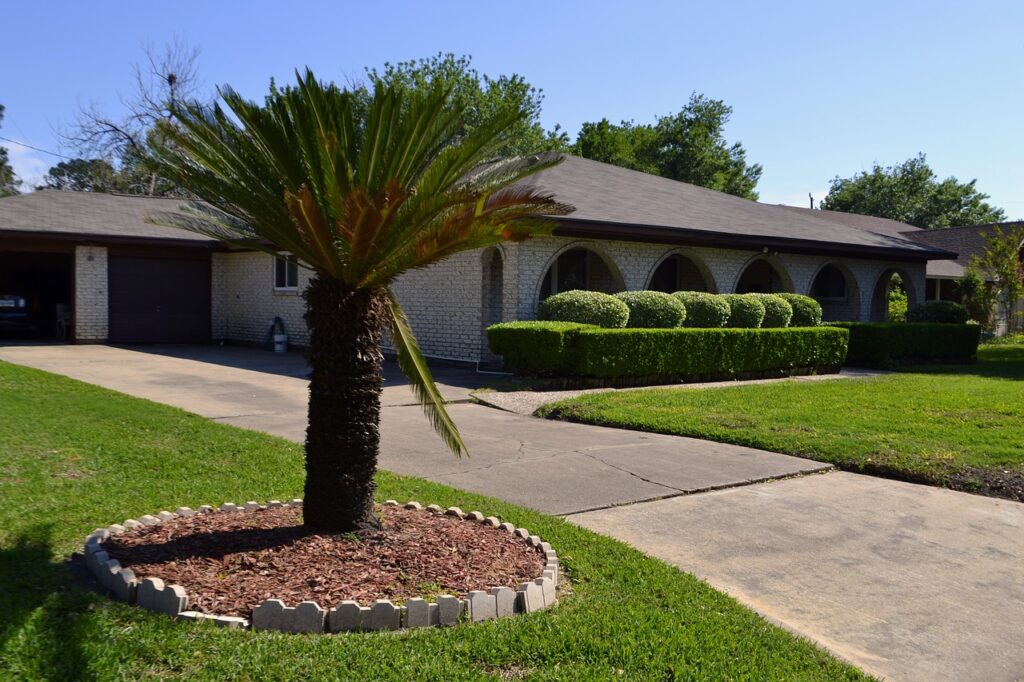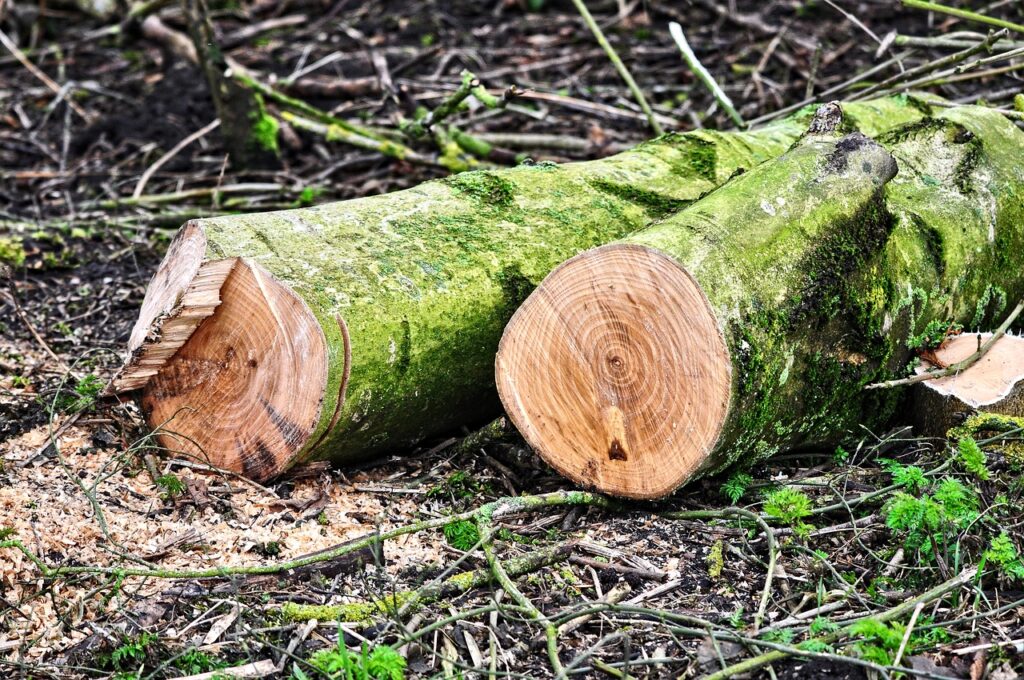The Money Tree, also known as Pachira Aquatica, is an important symbolic plant in traditional Chinese culture. While there are numerous legends surrounding its inception, the most widely accepted one has it that a truck driver in Taiwan tried to grow five saplings from a single pot by braiding their trunks together. There is a narrative of a farmer who was so down on his luck that he had lost his will to live. In his explorations, he came across a peculiar shrub with twisted trunks. He learned from the plant's resiliency and toughness, which he observed upon closer examination, and applied to his own life. He propagated more of these miracle plants from their seeds and sold them to interested parties.
Due to their hardiness and widespread availability, money tree plants are now a familiar sight in homes and workplaces. Those who believe in the principles of feng shui also hold the money tree in high esteem since it frequently produces five leaves on a single stalk. It is widely held in feng shui that all matter in the cosmos may be broken down into one of five elements: wood, fire, metal, water, or earth. It is thought that a money tree plant will bring its owner good luck and wealth if it is kept in a sunny spot where it will be exposed to areas related to financial success. The money tree plant, which is often presented to business associates with a red ribbon and symbol to signify the wealth and good fortune it is believed to bring its owner, is an ideal plant for the workplace because it requires nothing in the way of light, attention or water.
Instructions For Caring For A Money Tree Plant
- The Pachira Aquatica (Money Tree) is a drought- and low-light-tolerant plant that requires only occasional watering.
- The money tree has to be watered whenever the soil becomes dry to the touch. Once a week is typical, but it might be once a month if necessary.
- However, the plant will survive just well with very little water. Stay out of the direct sunshine for lengthy periods of time to keep the leaves from burning and turning a bit yellow.
- Liquid fertiliser is what you want to use on your money tree. The stems of the money tree can be severed in order to prune it. Over time, new growth will begin to develop at the cut.
How To Take Care Of A Money Tree?
When planted in a garden, money trees bloom with beautiful yellowish-white blooms, which are followed by huge seed pods with nuts that are similar to peanuts. However, the plant does not bloom when kept indoors since it needs pollination, a process often performed by bats in the wild. Despite this, money trees can increase & flourish positive energy in your home when given the right care in an indoor environment.
Sunlight
Money tree plants, according to ProFlowers, thrive in a combination of direct and indirect sunlight. Like other houseplants, your money tree will suffer if it is placed in direct sunlight for too long; to prevent leaf burn, try rotating or turning it every so often to give it a more even exposure to light without disturbing it too much. Is there anything else worth mentioning? With proper maintenance, a money tree may survive under fluorescent lighting and would look great in your office.
Soil
Miracle-Gro recommends using and consistently caring for potting soil that is both nutrient dense and well-drained. To accomplish this, use a potting mix that drains well or use some sand and gravel for increased porosity.
Water
How can we ensure that our Money Tree thrives? Give it a good soaking once per week to two weeks, letting the soil dry out in between, as recommended by The Sill. If you've increased your plant's exposure to light, you should also increase its watering frequency to prevent it from drying out. This is a very water-hungry plant, but only during certain times of the year.
Humidity And Temperature
The ideal temperature range for a money tree plant is between between 70 and 75 degrees Fahrenheit. The good news is that money trees are adaptable and forgiving, as they can survive temperature swings of up to 10 degrees either way. Money trees require high levels of humidity, so misting them frequently can help them flourish. To improve humidity in the winter, Bloomscape recommends placing your money tree plant on a pebble tray.
Among Other Things, Braiding, Pruning, And More
While it's not necessary to braid a money tree plant, most pachira aquatics sold today will come in a braided form. The trunks of braided money trees are woven together when the plants are still young because of their flexibility. You can learn how to braid your plant by following the steps outlined on GardeningGuides.com. Don't use too much tension when weaving the trunks together, and just tie a loose knot at the top to hold everything in place. The procedure can be repeated as the tree develops.
Best Money Tree Conditions
Because of the rarity of their natural habitat in the United States, money trees require vigilant maintenance. Whether you're growing the tree indoors or out, these conditions will help it flourish:
Directed And Indirect Illumination That Is Very Bright
Daily light is necessary for a money tree, but hot, direct sunshine will damage the leaves. It prefers partial shade, like that provided by other trees' canopies, and you can recreate this in your own home. This could involve either bringing the money tree indoors or placing it in a spot that receives partial shade. The money tree can even make it through on very little light, however it won't grow as quickly or produce as many leaves.
An Abundance Of Moisture In The Air
Water is equally important to the money tree as indirect sunlight. You may keep the plant's atmosphere damp and its leaves clean by misting it or by placing it in a room with a humidifier.
Roots That Are Quite Dehydrated
Money trees need to have moist leaves, but their roots can't be submerged. Make sure the pot you use has holes on the bottom for water to escape. Use a pebble tray in the bottom of the pot and well-draining potting soil (with added perlite and sand) when re-potting the plant. This stops the plant's roots from getting too much water and rotting. In order to prevent as much damage as possible, you should prioritise proper drainage.
Fruitful Ground
A potting mix that includes fertiliser and peat moss is ideal for the first stages of your money tree's life. You should fertilise your plants once a month using liquid fertiliser during the growing season. Fertilising should be put on hold during the colder months. It's important to give your money tree plenty of attention in its first few years of life. If the money plant grows to maturity and establishes a strong root system, it will require less care as an adult. To preserve the health and growth of your money tree, please follow these guidelines:
- Let the tree have some area to expand. You will need to periodically report your money tree if you intend to keep it in a pot, whether indoors or outdoors. It's best to use a pot that's at least as broad as the plant's foliage when possible. Never alter the soil composition when repotting a money tree (perlite, peat moss, and sand with fertiliser mixed in).
- Avoid becoming reactive and take action against pests. Fungus gnats can infest money plants if they are allowed to sit in soggy soil. They can become home to spider mites if their soil is too dry. Another pair of frequent pests are aphids and mealybugs. You can apply neem oil or a systemic insecticide to keep the bugs away. Fungus gnats can be dealt with by applying a weak permethrin solution to the soil of the container.
- If you want your plant to flourish, give it a good pruning. Reduce the size of a tree by removing dead or diseased branches before new growth begins. In order for the plant to generate the energy necessary to grow new branches and leaves, it will need to be exposed to indirect sunlight on a regular basis.
- A warm environment is ideal for the tree. Zones 10-12 are perfect for money plants. A severe freeze will kill them immediately. Money trees do best in moderate temperatures, so if you have to bring yours inside during the winter, make sure the thermostat stays between 60 and 75 degrees Fahrenheit.
Money Tree Plant Advantages
The Money Tree is well-liked not only for its practical value but also for its aesthetic appeal. Braiding is a common way to alter the look of the stalks. Our top 7 reasons for considering Pachira Aquatica the ideal houseplant are outlined below.

Stunningly Woven Trunk
You can buy Money Trees already braided if you like. Of course, if you're feeling brave, you may always try it on your own. Either buy a plant with at least three stalks, or wait for at least that many to grow before harvesting. To braid the plant while the stalks are still green and pliable, begin at the base and work your way up. When you come to the pinnacle, knot the two ends together with some twine. Maintain a regular braiding schedule of every two to three months to encourage the tree's continued healthy growth. If the stalks are braided too tightly, they may break. If your Money Tree snaps while you're braiding it, don't worry about it. Grafting tape or even ordinary duct tape will work for reattaching the shattered parts. If you wait about a month, you can start braiding the tree again without worrying about any further damage.
Connected To Prosperity In The Material World
The Money Tree, a major feature of feng shui decor, is said to increase one's wealth when put in the right room. Wealth and prosperity are said to be most strongly linked to the Southeast sector of your home or workplace, according to feng shui. Putting up a money tree here could bring you financial success in the future. Several legends attempt to explain why the Pachira Aquatica is commonly known as the Money Tree. According to one popular legend, the tree's five leaves precisely illustrate the five elements of Feng Shui: wood, metal, water, earth and fire.
Hardly Any Additional Water Would Be Needed.
Pachira Aquatica prefers the wet conditions found in marshes and wetlands. This tree could be perfect for you if you've never had any luck cultivating houseplants before. Overwatering is a leading cause of death for houseplants. The Money Tree, however, has to be watered at least twice each week. The bottom of your container needs drainage holes so that any standing water may be easily drained away. Ensure that the soil around your Money Tree receives a proper amount of water each time you water it. Reduced sunlight during the winter months will slow the tree's growth. This implies less watering is required than usual. Leaves and soil moisture can be used as indicators of how much watering is needed. If the leaves start to turn yellow and drop off, you may need to give the plant a good soaking. To the contrary, you should reduce your watering frequency if the leaves begin to fall off while the plant is still vibrantly green.
Grows Best In Dim Light
The Money Tree thrives in either direct or indirect fluorescent light, making it an ideal plant for the home or office. If you want to keep your tree out of direct sunlight and need to grow it on a desk or side table, this versatility is ideal.
Cats And Other Pets Safe
The Money Tree is safe for cats and other pets, according to the American Society for the Prevention of Cruelty to Animals (ASPCA). In light of this, your Money Tree should be situated where it will receive the least amount of attention from your dogs. While it is safe for cats to eat, excessive consumption could cause stomach problems. Eating too much at once or having an inquisitive cat chew on the stalks can also be detrimental to the health of your plant.
Requires Minimal Pruning
An additional perk is that it requires little in the way of upkeep after the recipient receives it as a present. There is hardly any need to prune the tree unless you want to. Keep your plant neat and compact by periodically cutting back the leaves. To avoid killing the plant, space out your cuts.
No Matter How Huge Or How Tiny
However, while Pachira Aquatica can reach heights of 60 feet in the natural, it is most commonly seen as a bonsai. The size of the container the tree is planted in has a significant impact on its ultimate stature. If you plant something in a larger container, it will eventually reach a greater height. A Money Tree you buy in a shop will typically be between one and two feet tall. For it to grow to this size, it usually takes approximately five years. The plant will need to be repotted at some point to ensure its continued health.
Conclusion
Pachira Aquatica, more commonly known as the Money Tree, is a significant cultural symbol in traditional Chinese belief. Feng shui adherents also place a great value on the money tree due to the fact that its stalks often bear five leaves. Keeping a money tree plant in a bright window is supposed to bring its owner prosperity and good fortune. Infrequent watering is all that is needed to keep the Pachira Aquatica (Money Tree) alive and flourishing. A money tree can be pruned by cutting off its branches. A money tree, with the right care, might flourish in your workplace, even if it's illuminated by fluorescent lights.
Content Summary
- Pachira Aquatica, more commonly known as the Money Tree, is a significant cultural symbol in traditional Chinese belief.
- Although its origin is shrouded in mystery, one popular tale holds that it was first created when a truck driver in Taiwan attempted to cultivate five seedlings from a single pot by interlacing their trunks.
- Due to their broad availability and resistance to environmental stresses, money tree plants are common sights in many households and offices.
- Feng shui adherents also place a great value on the money tree due to the fact that its stalks often bear five leaves.
- Money tree plants are believed to offer their owners financial success and good fortune if they are placed in a sunny location.
- The money tree plant is perfect for the office because it doesn't need a lot of care, and it's commonly given as a gift to business acquaintances with a red ribbon and symbol to indicate the wealth and good fortune it is thought to bring the owner.
- Tips on How to Take Care of a Money Tree Plant
- Infrequent watering is all that is needed to keep the Pachira Aquatica (Money Tree) alive and flourishing.
- To keep the money tree healthy, water it whenever the soil seems dry.
- The plant, though, will do fine with only a trickle of water.
- If you want to grow a big, prosperous money tree, water it regularly with liquid fertiliser.
- A money tree can be pruned by cutting off its branches.
- Despite this, with proper indoor maintenance, money trees can really expand and thrive positive energy in your home.
- A money tree, with the right care, might flourish in your workplace, even if it's illuminated by fluorescent lights.
- Plants thrive in nutrient-rich, well-drained potting soil, which Soil Miracle-Gro suggests you use and maintain regularly.
- The Sill suggests giving it a thorough bath once per week to two weeks, with drying off periods in between.
- To avoid your plant from drying out, you should increase the frequency with which you water it if you have increased its exposure to light.
FAQs About Money Tree Plant
Pachira aquatica is known by a large number of common names including water chestnut, Guiana chestnut and Malabar chestnut. In addition, it is often commercially sold as a houseplant or bonsai under the name of money tree or money plant.
Probably the most popular Feng Shui plant, the money tree is said to bring good luck and fortune wherever they go. They are also super easy to care for and can bounce back if you neglect them a little. This tropical indoor plant helps to purify the air and will thrive best in sunny spaces.
According to Feng shui, Money Plant (also called as Feng Shui Money Tree) is used to enhance the energy of wealth and prosperity in the Wealth and Money Bagua area (Southeast). In feng shui the area connected to your money, or financial prosperity and abundance, is the Southeast area of your home or office.
This plant does not need much sunlight hence it should be planted indoors. According to vastu, it is not auspicious to plant the money plant outside the home. It easily dries in the weather outside and does not grow. A stunted growth of the plant is inauspicious.
In order for the tree to thrive as a houseplant or outdoor plant, provide it with the following: Bright indirect light: A money tree needs daily light, but direct sunlight will scorch its leaves. It grows naturally in partial shade beneath the canopy of other trees, so provide a similar environment for it in your home.


